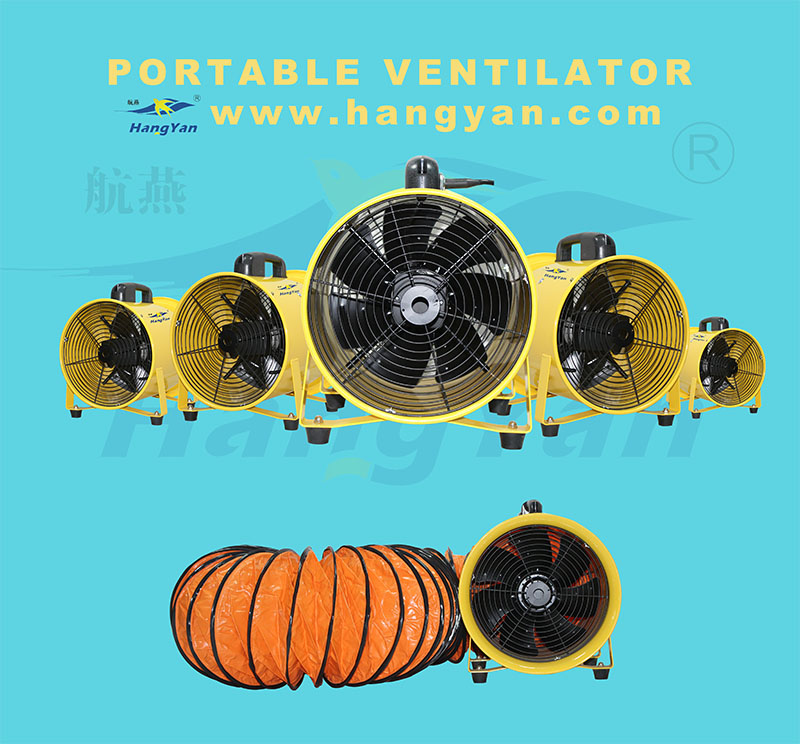

Portable Ventilation Fans – Background
Other sites such as wells, pumping stations, sewers, tanks can be intrinsically hazardous because of dust, specific gases, explosive atmosphere or depleted levels of oxygen. Portable ventilation fans as very useful in these situations and can be used either to extract hazardous air and fumes or supply fresh air. Portable ventilation fans also find use in wider industry where contaminants from work processes such as welding can be easily ventilated to outside.
Portable Ventilation Fans – Airflow And Pressure
On their own portable ventilation fans are of little use but with the addition of flexible ducting they have a huge variety of applications. All portable ventilation fans are limited by their flow and pressure capability, and like all fans they have a pressure/flow curve, which relates how much air flow can be expected given an amount of pressure drop on the fan. The general rule is the more resistance to air flow (pressure drop) then the less airflow will result. In practical terms this means that for any portable ventilation fan the more flexible ducting that you connect to it the less the air will flow. Generally manufacturers of portable ventilator fans will not specify a pressure capability, but will specify a maximum flexible duct length that can be attached to the fan without a significant drop in its stated airflow.
For the majority of portable ventilation fans applications the outside is close enough to the ventilated area to get foul air to outside or conversely, clean air to inside by using a single fan and a length of duct within the manufacturers recommendations, however, where the distance is greater there are a some options;
a. To use multiple portable ventilator fans and flexible ducting lengths to connect the units. If the maximum recommended ducting length for a particular fume extractor fan is 10m then by using multiple units and multiple lengths of ducting the capability of the overall extract system increases to say 20m for 2 fans, 30m for 3 fans etc.
b. To use a higher pressure ventilation fan. Some portable ventilation fans have much more pressure capability than others and can more air along much longer lengths of ducting. Centrifugal ventilation fans are usually more costly than an axial extractor but cheaper than using multiple axial portable ventilation fans.
c. To use a portable ventilation fan with a higher flow capability than you need. If say you need to move 500m3/hr 20m, and the 500m3/hr fan is only rated to ducting of 10m, then try using a fan that moves 1000m3/hr rated to 10m of duct but connected to 20m of ducting the resulting airflow will not be 1000m3/hr, but may be close to the 500m3/hr that you actually require. In effect, the larger fan will be operating at a less efficient point on its pressure/airflow curve.
If you are interested in portable axial fan ,pls feel free to contact us,
mobile phone/wechat /whatsapp:+86-18806585008
